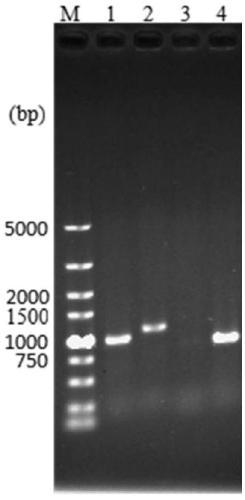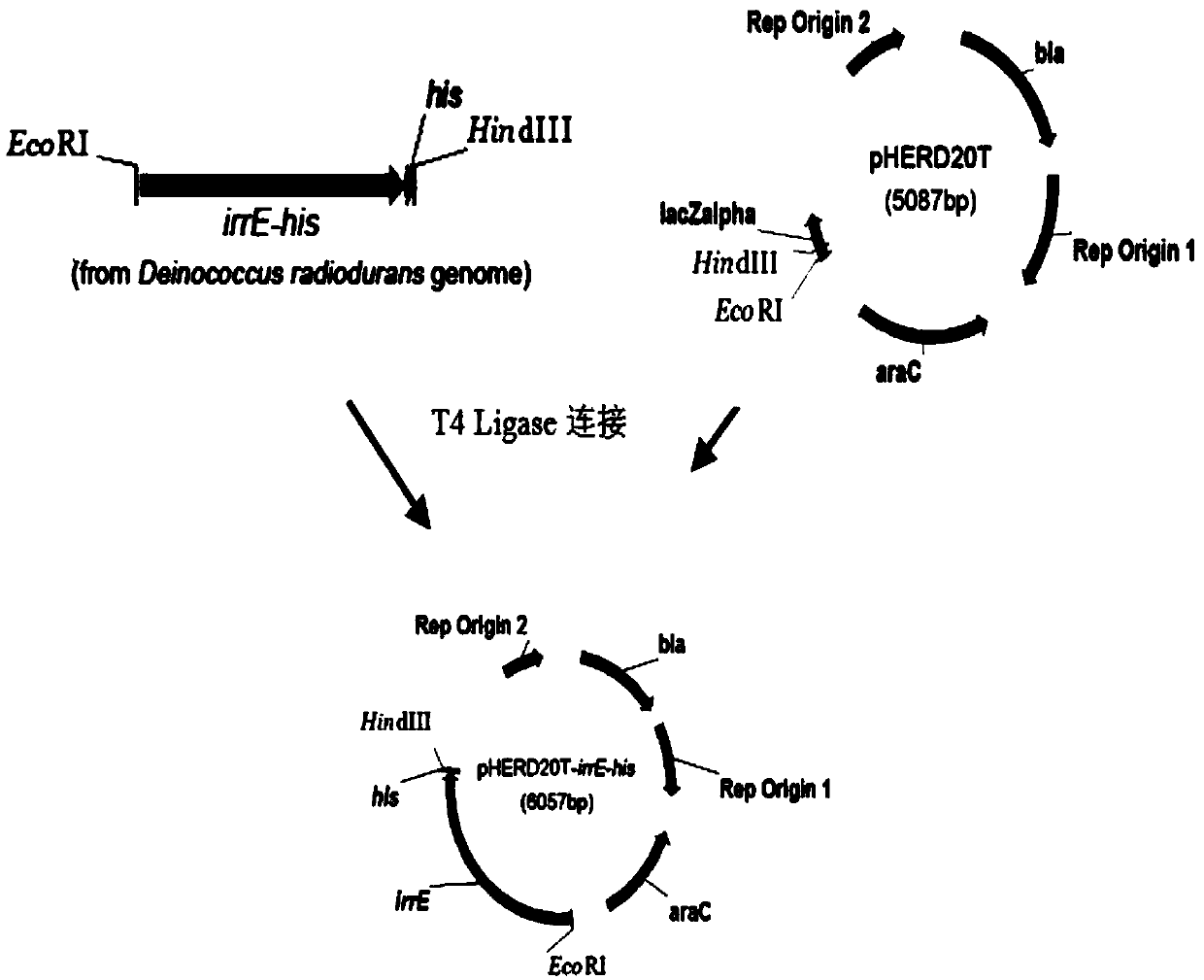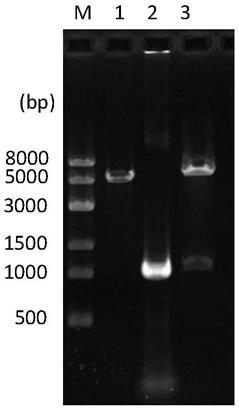Genetically engineered bacteria with high electroactivity and environmental stress tolerance
A technology of genetically engineered bacteria and genetically engineered strains, applied in the field of bioengineering, to achieve the effects of enhanced tolerance, high production of electrical activity, and reduced system internal resistance
- Summary
- Abstract
- Description
- Claims
- Application Information
AI Technical Summary
Problems solved by technology
Method used
Image
Examples
Embodiment 1
[0048] This example illustrates the construction of Pseudomonas aeruginosa ldhA gene knockout strain ldhA - . The specific process includes:
[0049] 1. Design upstream and downstream primers with restriction sites
[0050] ldhA-F: 5' TCCCCCCGGGCGGCATGGACGACTACCTGA 3'
[0051] ldhA-R: 5' ACATGCATGCTCAGGCCCGGACCCGAT 3'
[0052] GmR-F: 5'AACTGCAGATGAACCTGAATCGCCAGCG 3'
[0053] GmR-R: 5'AACTGCAGTAGGTGGCGGTACTTGGGTCG 3'
[0054] Using the wild-type Pseudomonas aeruginosa PAO1 genome as a template, amplify the 1485bp DNA fragment including ldhA (hereinafter referred to as ldhA); use the plasmid pBBR1MCS-5 as a template to amplify the Qingda resistance gene Gm r (850bp), the reaction system is shown in Table 1.
[0055] Table 1 PCR reaction system
[0056]
[0057] The PCR amplification conditions were: pre-denaturation at 94°C for 5 minutes; 30 cycles of 94°C for 30s, 64°C for 30s, and 72°C for 1 min; 72°C for 10 minutes.
[0058] 3. Gel recovery ldhA fragment, 16 ℃ and...
Embodiment 2
[0063] This example illustrates the construction of the recombinant expression plasmid pHERD20T-irrE. The specific process includes:
[0064] 1. Design and synthesize upstream and downstream primers with restriction sites (downstream primers have his tags)
[0065] Upstream primer irrE-F: 5'-CCGGAATTCGTGCCCAGTGCCAACGTCAG-3'
[0066] Downstream primer irrE-R: 5'-CCCAAGCTTGTGGTGGTGGTGGTGGTGCTGTGCAGCGTCCTGC-3'
[0067] 2. Use the genome of Deinococcus radiodurans R1 as a template to amplify the target fragment by PCR. The reaction system is shown in Table 2.
[0068] Table 2 PCR reaction system
[0069]
[0070] The PCR amplification conditions were: pre-denaturation at 94°C for 5 minutes; 30 cycles of 94°C for 30s, 58°C for 30s, and 72°C for 1 min; 72°C for 10 minutes.
[0071] The PCR product was detected by 1% agarose gel electrophoresis, and the fragment with a size of 982bp was recovered by cutting the gel, and double-digested by HindIII and EcoR I, purified, and the ...
Embodiment 3
[0073] This example illustrates the construction of genetically engineered strain ldhA - -irrE, the specific process includes:
[0074] The correctly sequenced pHERD20T-irrE was extracted again, introduced into the competent cells of Pseudomonas aeruginosa ldhA knockout strain by electric shock transformation, and then spread on LB plates containing 300 μg / mL carbenicillin for static culture at 37°C overnight. Pick positive transformants for gene level verification (PCR and double enzyme digestion), select transformants with correct gene level verification to collect bacteria, obtain protein samples after ultrasonic disruption and His-tag protein purification, and add protein loading buffer for further analysis. SDS-PAGE electrophoresis for protein level verification (eg Figure 4 shown), and it was verified that the genetically engineered strain ldhA of Pseudomonas aeruginosa was - -irrE.
PUM
 Login to View More
Login to View More Abstract
Description
Claims
Application Information
 Login to View More
Login to View More - R&D
- Intellectual Property
- Life Sciences
- Materials
- Tech Scout
- Unparalleled Data Quality
- Higher Quality Content
- 60% Fewer Hallucinations
Browse by: Latest US Patents, China's latest patents, Technical Efficacy Thesaurus, Application Domain, Technology Topic, Popular Technical Reports.
© 2025 PatSnap. All rights reserved.Legal|Privacy policy|Modern Slavery Act Transparency Statement|Sitemap|About US| Contact US: help@patsnap.com



